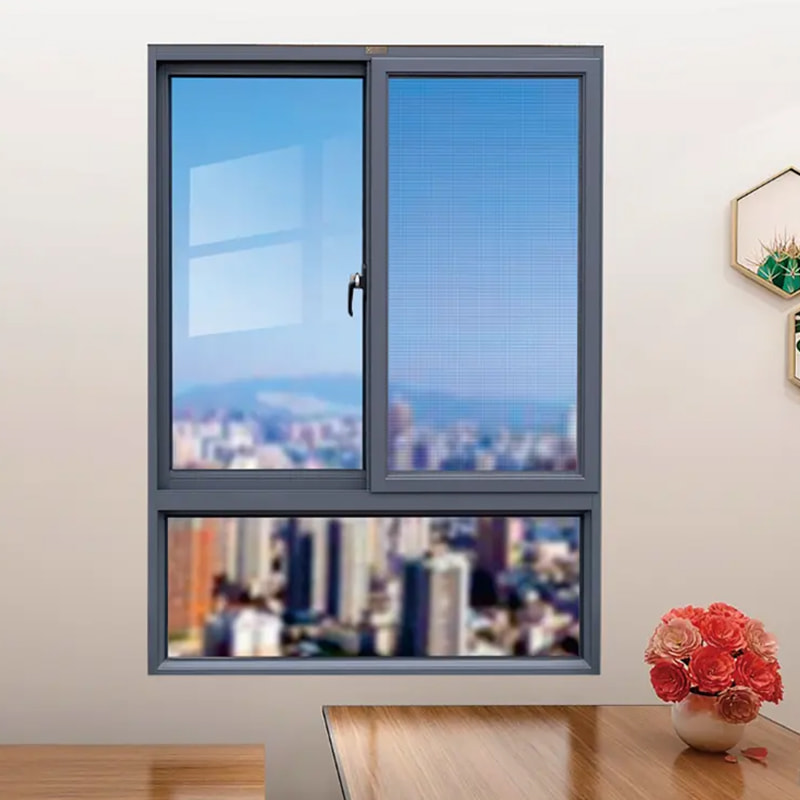Send inquiry
With the popularization of energy-saving and environmental protection concepts around the world, building design and material selection play a vital role in improving energy efficiency and reducing carbon emissions. Thermal Break System Sliding Window, as a common window design in modern buildings, has become one of the key components for achieving green building and energy-saving goals with its excellent thermal insulation performance. It not only effectively reduces energy waste, but also provides a more comfortable indoor environment for residents.
Thermal Break System Sliding Window is a specially designed window that uses thermal break materials (usually high-efficiency thermal insulation materials such as plastics and polyurethane) to cut off the heat conduction path of the metal frame. This design can effectively reduce the conduction of heat through the window frame and reduce the impact of the temperature difference between indoor and outdoor on the performance of the window. Compared with traditional windows, thermal break system sliding windows can significantly improve the thermal insulation of windows and reduce the loss of cold or warm air, thereby achieving energy-saving effects.

Main advantages of thermal break system sliding windows
Excellent thermal insulation performance
Thermal break system sliding windows prevent the rapid conduction of heat by embedding thermal break materials in aluminum alloy window frames. Whether in hot summer or cold winter, they can effectively maintain indoor temperature and reduce the frequency of use of air conditioning and heating equipment, thereby achieving energy saving.
Improving living comfort
Thermal break system sliding windows can effectively prevent outdoor heat waves or cold air from penetrating into the room through the windows, reducing the discomfort caused by temperature fluctuations. They provide occupants with a more constant and comfortable indoor environment, especially suitable for use in extreme climate conditions.
Reducing condensation moisture problems
Since the thermal break system can effectively control the temperature of the window frame, it avoids condensation generated when hot air contacts the cold window frame, thereby reducing mold and corrosion problems caused by moisture accumulation. This is essential for maintaining the quality of window frames and indoor air.
Environmental protection and energy saving
The design of thermal break system sliding windows not only helps save energy consumption, but also helps reduce the carbon footprint of buildings. By reducing the dependence on air conditioning and heating systems, it can significantly reduce energy consumption and contribute to environmental protection.
Modern aesthetics and functionality
In addition to excellent performance, thermal break system sliding windows also adopt a simple and modern design, which is suitable for various architectural styles, especially in modern residential and commercial buildings, and can be well integrated with the overall design. At the same time, the sliding window is easy to open, saves space, and is suitable for various apartment types.
Application areas of thermal break system sliding windows
Residential buildings
Thermal break system sliding windows are widely used in modern residences, especially in high-rise buildings or villas that need energy saving and indoor comfort. They not only improve the overall aesthetics, but also effectively reduce long-term energy costs.
Commercial buildings
Commercial office buildings, hotels, shopping malls and other buildings also benefit from thermal break system sliding windows. They can help commercial buildings reduce air conditioning and heating costs while improving the comfort of the indoor working environment.
Green buildings and energy-saving buildings
With the promotion of green building certification standards, thermal break system sliding windows have been widely used in new buildings. It not only meets energy efficiency standards, but also helps buildings get higher scores in various certifications.
Industry Development Trends
Intelligent Functions
With the advancement of science and technology, the future thermal break system sliding windows will not only be static energy-saving devices, but will also add intelligent adjustment functions, such as automatic window opening and closing, temperature adjustment sensors, etc., to achieve more efficient energy management.
Material Innovation
New thermal break materials will continue to be developed, such as more efficient polymers, composite materials, etc., to further improve the thermal insulation and durability of thermal break system sliding windows.
Comprehensive building integration solutions
In the future, thermal break system sliding windows will be integrated with other building energy-saving systems (such as roof insulation, wall insulation, etc.) to provide a more complete energy-saving solution and help the construction industry move towards a new stage of green and sustainable development.
As an important part of energy-saving buildings, thermal break system sliding windows not only effectively improve the thermal insulation performance of buildings, but also provide residents with a more comfortable indoor environment. With the improvement of environmental awareness and the development of energy-saving technologies, thermal break system sliding windows will occupy a more important position in future architectural design, helping the global construction industry to achieve energy-saving and emission reduction goals and promote the popularization and development of green buildings.